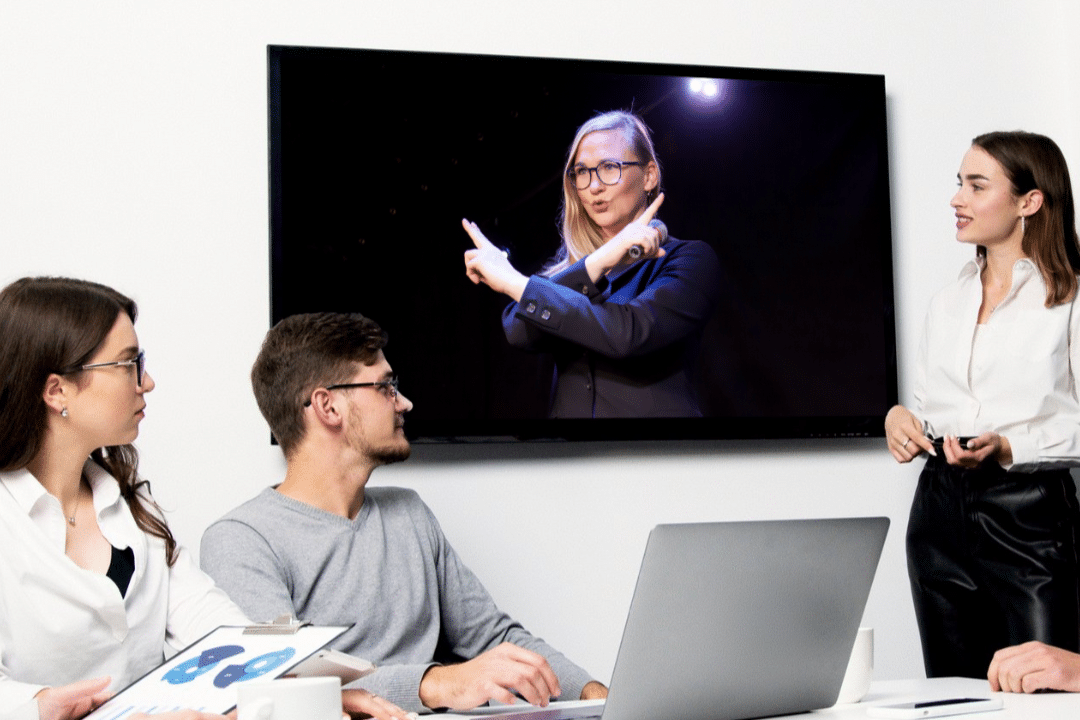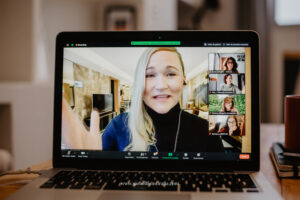Written by

Sina Brust
#virtualspacehero
As the corporate world adapts to the mix of remote and in-person operations, the art of conducting effective hybrid meetings has become a critical skill for leaders and facilitators. With teams increasingly split between remote and in-person work, leaders must develop the skills to manage and facilitate meetings that bridge this divide. Effective hybrid meetings ensure that all participants, whether in the office or dialing in from home, can contribute equally and feel engaged.
We at #VirtualSpaceHero welcomed Douglas Ferguson, President of Voltage Control, to our LinkedIn Live series to discuss the complexities of hybrid meetings and share strategies for meeting effectiveness.

Douglas Ferguson is an entrepreneur and human-centered technologist with over 26 years of experience. As president of Voltage Control, he develops leaders through facilitation, innovation, and play. He has transformed leaders at Nike, Google, Tesla, Apple, and Adobe.
Previously, Douglas was CTO at various Austin startups, leading teams with agile and human-centered design principles. He worked with Google Ventures on Design Sprints and now applies this expertise globally.
Douglas is active in the Austin startup community, mentors startups, and advises early-stage ventures. He is the author of four books, including “Magical Meetings,” and hosts the weekly podcast Facilitation Lab. In his free time, he enjoys boxing, pilates, and photography.
Defining Hybrid Meetings 👥
Understanding the full implications of hybrid meetings is crucial for successful implementation. Hybrid meetings involve participants joining from both in-person and remote locations. The main challenge is ensuring that all participants, regardless of location, feel equally included and can contribute effectively.
To make hybrid meetings successful, it’s essential to create an environment where every participant feels valued. This means addressing the technical, logistical, and psychological aspects of meeting design. Facilitators must ensure that remote participants can see and hear everything happening in the room, and vice versa. This often requires a thoughtful setup of cameras, microphones, and display screens.
The Journey to Facilitation Expertise 🧠
Becoming an expert in facilitation often involves a non-traditional path. Many facilitation experts start in other fields and transition into facilitation roles. The journey often begins with a curiosity about team dynamics and effective collaboration. This interest leads to realising that effective leadership relies heavily on strong facilitation skills. While leaders are often trained in various management skills, facilitation is frequently overlooked. However, it is crucial for guiding productive meetings and discussions.
Facilitators play a crucial role in ensuring the success of hybrid meetings. They must be adept at managing group dynamics and using technology to bridge the gap between remote and in-person participants. This requires a deep understanding of the available tools and best practices for engaging participants. The ability to adapt and respond to the unique challenges of hybrid meetings sets skilled facilitators apart.
Designing Effective Hybrid Meetings 🛠️
Intentionality in the planning phase is vital for effective hybrid meetings. It’s not just about using the right tools or technology, but about considering how each participant will join the meeting and their experience. This ensures that the meeting’s structure and technology use do not disadvantage remote participants.
👉 Collaborative Tools
Using platforms like Miro or Mural can help integrate inputs from both in-person and remote participants, creating a cohesive experience. These tools allow for real-time collaboration, making it easier to gather and synthesize ideas from all participants, regardless of their location.
👉 Equal Participation
Ensuring that all meeting tools support collective decision-making and brainstorming enables active involvement from all attendees. Facilitators can use techniques such as virtual hand-raising, polling, and breakout rooms to ensure that everyone has a voice. This helps to create an inclusive environment where all participants feel valued and heard.
Challenges and Strategies 🗣️
A common challenge in hybrid meetings is ensuring remote participants feel like they are not second-class attendees. To solve this, facilitators or champions in each location, including the virtual space, can advocate for the needs of each group. Additionally, the technical setup necessary for effective hybrid meetings should be considered. This setup includes multiple camera angles to ensure remote participants can see and engage with in-room activities and vice versa. Such setups help simulate a more inclusive environment and prevent participants from feeling disconnected.
Another strategy for effective hybrid meetings is to establish clear roles for facilitators. This includes having designated facilitators for in-person and remote participants to ensure everyone’s needs are addressed. Facilitators should also establish clear ground rules for participation, such as encouraging remote participants to use video and ensuring that in-person participants are mindful of their remote colleagues.
Want to get certified and become an EXTRAordinary Hybrid Facilitator?
Future Directions ✨
Artificial intelligence (AI) will play an important role in enhancing hybrid meetings. AI can quickly synthesize data, generate ideas, and create prototypes for discussion, adding a layer of interaction and engagement that can be particularly beneficial in hybrid settings. AI tools can help facilitators manage the flow of the meeting, monitor participant engagement, and even suggest when to take breaks or shift topics based on the energy and engagement levels of the participants.
Practical Tips for Effective Hybrid Meetings
1️⃣ Preparation and Planning: Prepare thoroughly, considering the needs of both remote and in-person participants. Ensure the meeting agenda is clear and all participants know what to expect.
2️⃣ Technical Setup: Invest in good quality audio and video equipment. Use multiple cameras to capture different angles of the meeting room, and ensure that remote participants have a clear view of what’s happening.
3️⃣ Facilitator Roles: Assign facilitators to each group of participants. This includes having a facilitator for the in-person group, one for the remote group, and potentially a hybrid facilitator who manages the interaction between both groups.
4️⃣ Engagement Tools: Utilize engagement tools like polls, Q&A sessions, and interactive whiteboards to keep all participants involved. Platforms like Miro, Mural, Slido and Mentimeter can be very effective.
5️⃣ Feedback Mechanisms: Regularly gather participant feedback to understand what works well and needs improvement. Use this feedback to refine your approach to hybrid meetings.
Overcoming Common Challenges
Hybrid meetings present several challenges, such as ensuring equitable participation and managing different types of engagement. Facilitators can overcome these challenges by intentionally planning and using the right tools and techniques.
💡Technical Considerations
Effective hybrid meetings require a robust technical setup. This includes high-quality audio and video equipment, multiple camera angles, and collaboration tools supporting real-time interaction.
💡Inclusivity
Creating an inclusive environment is essential for effective hybrid meetings. Facilitators should strive to ensure that all participants feel seen and heard regardless of location. This can be achieved by using engagement techniques such as polling, breakout rooms, and virtual hand-raising. Additionally, facilitators should be mindful of the unique challenges faced by remote participants, such as feeling isolated or disconnected from the in-room activity.
Conclusion
Managing the complexities of hybrid meetings can be much easier with practical guidance to enhance your facilitation skills. As hybrid work arrangements become more common, effectively managing these meetings is becoming an essential skill for leaders across industries. By employing intentional planning, robust technical setups, and inclusive engagement strategies, facilitators can ensure that hybrid meetings are productive and equitable for all participants.
Effective hybrid meetings are essential in today’s diverse work environments. By understanding the unique challenges and employing the right strategies and tools, facilitators can create engaging, inclusive, and productive meetings for all participants. As technology continues to evolve, the potential for even more effective hybrid meetings will only grow, offering exciting opportunities for innovation in meeting facilitation.




